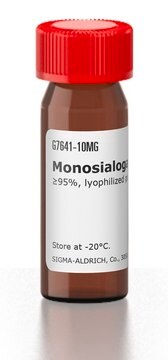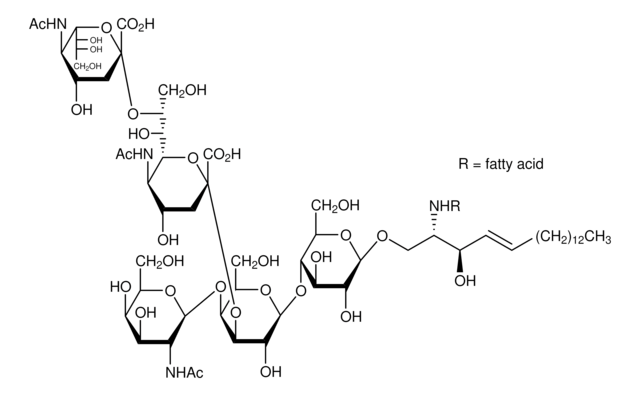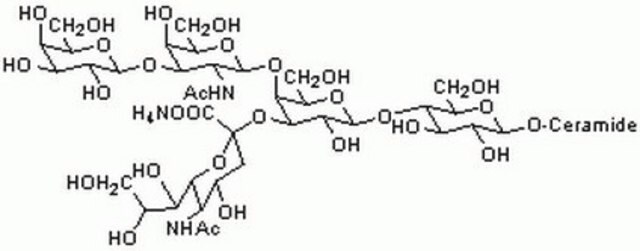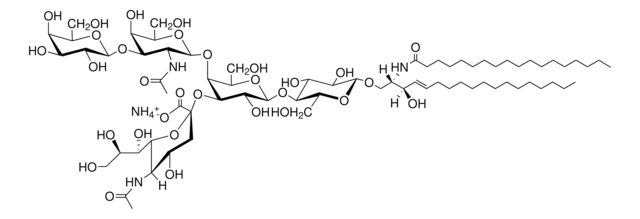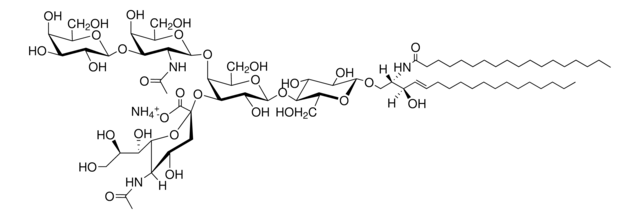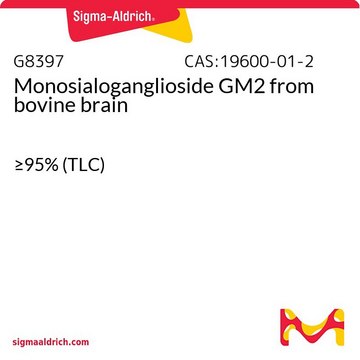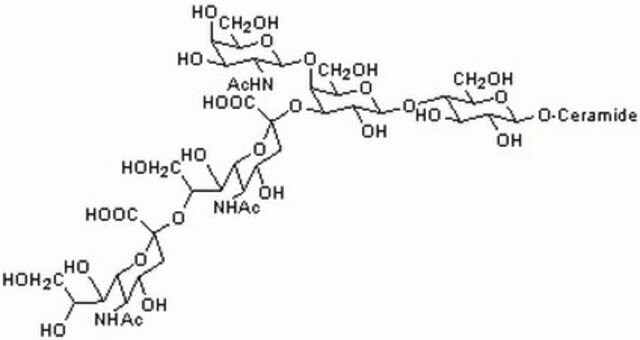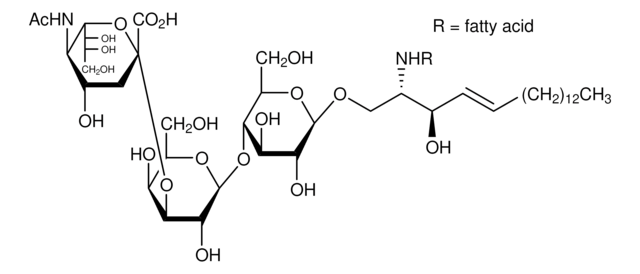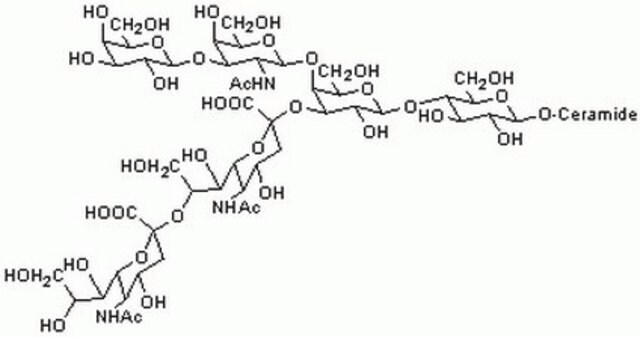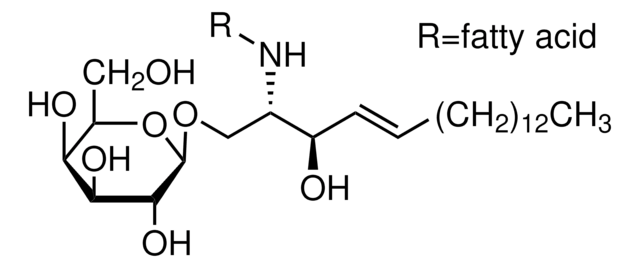G2392
Disialoganglioside GD1a from bovine brain
≥95% (TLC), lyophilized powder
Sinónimos:
Ganglioside GD1a, disialo from bovine brain
About This Item
Productos recomendados
Nivel de calidad
Ensayo
≥95% (TLC)
Formulario
lyophilized powder
solubilidad
DMSO: soluble
temp. de almacenamiento
−20°C
InChI
1S/C86H152N4O39.2Na/c1-6-8-10-12-14-16-18-20-22-24-26-28-30-32-34-36-51(100)50(90-60(105)37-35-33-31-29-27-25-23-21-19-17-15-13-11-9-7-2)46-118-80-69(111)67(109)72(57(43-94)120-80)123-82-71(113)78(129-86(84(116)117)39-53(102)62(88-48(4)98)77(128-86)65(107)55(104)41-92)74(59(45-96)122-82)124-79-63(89-49(5)99)75(66(108)56(42-93)119-79)125-81-70(112)68(110)73(58(44-95)121-81)126-85(83(114)115)38-52(101)61(87-47(3)97)76(127-85)64(106)54(103)40-91;;/h34,36,50-59,61-82,91-96,100-104,106-113H,6-33,35,37-46H2,1-5H3,(H,87,97)(H,88,98)(H,89,99)(H,90,105)(H,114,115)(H,116,117);;/q;2*+1/p-2/b36-34+;;/t50-,51+,52?,53?,54-,55-,56?,57?,58?,59?,61+,62+,63?,64-,65-,66?,67?,68?,69?,70?,71?,72?,73?,74?,75?,76?,77?,78?,79?,80?,81?,82?,85?,86?;;/m0../s1
Clave InChI
CWLDKTAXQZEVQN-CUEXFKMESA-L
¿Está buscando productos similares? Visita Guía de comparación de productos
Amino Acid Sequence
Descripción general
Aplicación
- as a receptor for the detection of murine norovirus-1 (MNV-1) by RT-PCR
- as a glycolipid to study the interaction between protein human endogenous retrovirus W family pHERV-W ENV and glycolipids by enzyme-linked immunosorbent assay (ELISA)
- as a reference standard to analyze the ganglioside signatures of prostate cancer cells by high-performance liquid chromatography
Acciones bioquímicas o fisiológicas
Código de clase de almacenamiento
11 - Combustible Solids
Clase de riesgo para el agua (WGK)
WGK 3
Punto de inflamabilidad (°F)
Not applicable
Punto de inflamabilidad (°C)
Not applicable
Elija entre una de las versiones más recientes:
¿Ya tiene este producto?
Encuentre la documentación para los productos que ha comprado recientemente en la Biblioteca de documentos.
Los clientes también vieron
Nuestro equipo de científicos tiene experiencia en todas las áreas de investigación: Ciencias de la vida, Ciencia de los materiales, Síntesis química, Cromatografía, Analítica y muchas otras.
Póngase en contacto con el Servicio técnico